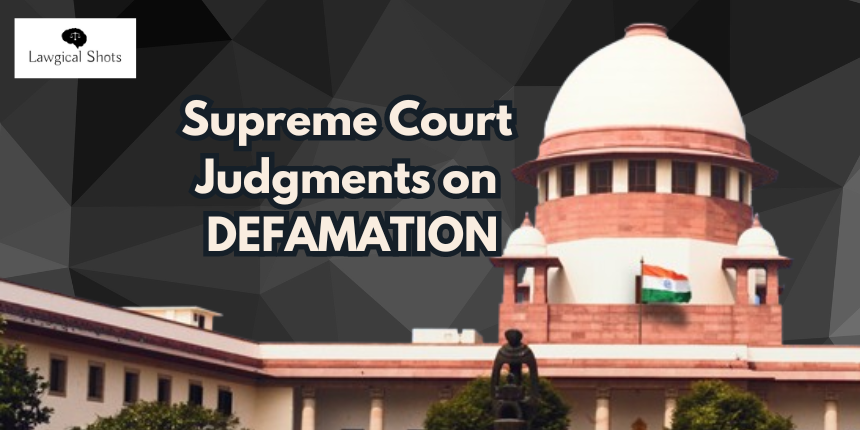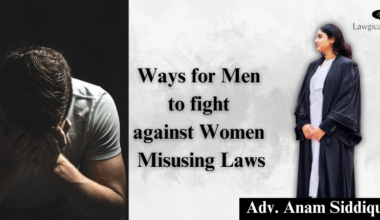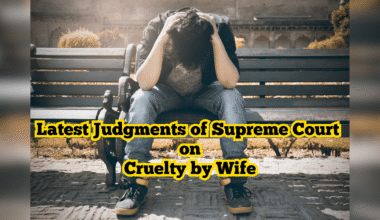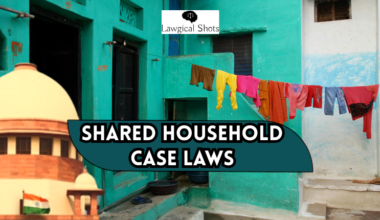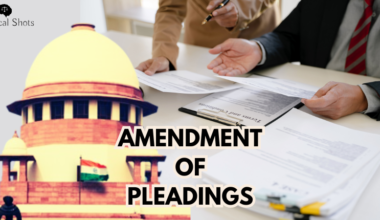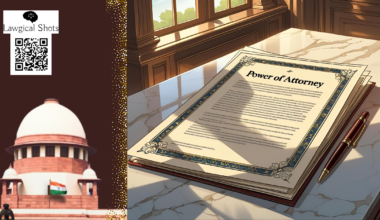While we are still struggling with the transition from old to new criminal laws, legal provision for defamation under Bharatiya Nyaya Sanhita remains the same. Hence, the landmark judgments on defamation are also applicable on the new cases, which practising advocates are representing for their clients. Here, we have compiled a few important and landmark Supreme Court case laws on defamation.
Landmark Supreme Court Judgments on Defamation Cases in India
Google and Defamatory Material
Among the latest judgments on defamation case, Google India Private Limited v. M/S. Visakha Industries set a landmark on intermediaries and publication of web content. The Court denied protection for Google which had not removed content which was defamatory and so requested by the complainant. The Court held the refusal to remove the material in dispute from the internet to be publication under the provisions of IT Act and the defamation law, thereby attracting the clutches of Section 499 of IPC.
Defamation v. Contempt of Court
One of the Supreme Court judgments on defamation cases distinguishes defamation from contempt of court. The Apex Court in Bathina Ramakrishna Reddy v. State of Madras revealed that “What is made punishable in the Indian Penal Code is the offence of defamation as defamation and not as contempt of court. If the defamation of a subordinate court amounts to contempt of court, proceedings can certainly be taken under section 2 of the Contempt of Courts Act, quite apart from the fact that other remedy may be open to the aggrieved officer under section 499 of the Indian Penal Code. But a libel attacking the integrity of a judge may not in the circumstances of a particular case amount to a contempt at all, although it may be the subject-matter of a libel proceeding.”
Role of Magistrate in Defamation Cases
Subramanian Swamy v. Union of India is one among the famous landmark cases on defamation law. The Court emphasised the importance of the role played by the Magistrate in defamation case. The Supreme Court in this defamation judgment said that “In case of criminal defamation neither any FIR can be filed nor can any direction be issued under Section 156(3) CrPC. The offence has its own gravity and hence, the responsibility of the Magistrate is more. …….matters of criminal defamation the heavy burden is on the Magistracy to scrutinise the complaint from all aspects. The Magistrate has also to keep in view the language employed in Section 202 CrPC which stipulates about the resident of the accused at a place beyond the area in which the Magistrate exercises his jurisdiction. He must be satisfied that ingredients of Section 499 CrPC are satisfied. Application of mind in the case of complaint is imperative.”
Specificity in Defamatory Material
The Supreme Court in case of Manoj Kumar Tiwari v. Manish Sisodia elaborated the importance of specificity in an allegedly defamatory statement. The Supreme Court judgment explained that “even if a person belonging to a political party had challenged a person holding public office by stating “I will expose your scam”, the same may not amount to defamation. Defamatory statement should be specific and not very vague and general. The essential ingredient of Section 499 is that the imputation made by the accused should have the potential to harm the reputation of the person against whom the imputation is made.”
Exceptions of Defamation
The landmark defamation case in India in Chaman Lal v. State of Punjab delineated exception 8 as against exception 9 of the legal provision. The Supreme Court judgment states that “Good faith requires care and caution and prudence in the background of context and circumstances. The position of the person making the imputation will regulate the standard of care and caution. Under the Eighth Exception statement is made by a person to another who has authority to deal with the subject matter of the complaint whereas the Ninth Exception deals with the statement for the protection of the interest of the person making it. Interest of the person has to be real and legitimate when communication is made in protection of the interest of the person making it.”
In Sukra Mahto v. Basdeo Kumar Mahto (decided on April 2, 1971), the Supreme Court judgment on defamation case illuminated the ingredients of good faith under the Ninth exception to Section 499 of the Indian Penal Code. The Apex Court explained that “The person alleging good faith has to establish as a fact that he made enquiry before he made the imputation and he has to give reasons and facts to indicate that he acted with due care and attention and was satisfied that the imputation was true. The proof of the truth of the statement is not an element of the Ninth Exception as of the First Exception to section 499. In the Ninth Exception the person making the imputation has to substantiate that his enquiry was attended with due care and attention and he was thus satisfied that the imputation was true. The accent is on the enquiry, care and objective and not subjective satisfaction.”
In case of Kanwal Lal v. State of Punjab (decided on September 28, 1962), the Supreme Court explained the difference between two exceptions under the defamation law. “The point of difference between exceptions, 8 and 9 is that whereas in the former the person to whom the complaint is made must have lawful authority to deal with the subject matter of the complaint and take proceedings against that person, there is no such requirement in exception 9 where it is sufficient if a communication is made to a person for the protection of one’s own interest in which the other also has an interest. This is clearly brought out by the illustrations to the exception.”
In this case law on defamation, the Apex Court in Sahib Singh Mehra v. State of Uttar Pradesh (decided on January 22, 1965) explained that “Exception 8 was applicable only in cases where the defamatory statement was contained in a complaint to a person who had lawful authority over the person concerned in respect of the subject matter of the accusation.” The matter involved a public servant who complained to the Panchayat Officer for removal of a woman from the house alleging her to be a prostitute. The Court upheld his conviction rejecting him protection under exceptions 8 and 9, holding them inapplicable to the case since prostitution was not an offence which the Gram Panchayat could take cognizance of. The imputation in the said case was held not to be in good faith for protecting anyone’s interests.
Defamation of a Group
The Supreme Court in G. Narasimhan & Ors. Etc vs T. V. Chokkappa (Criminal Appeal Nos. 18, 53 and 54 of 1972) discussed the impact of defamatory imputation on a group of people. The Court held that “A defamatory imputation against a collection of persons thus falls within the definition of defamation. The language of the Explanation is wide, and therefore, besides a company or an association, any collection of persons would be covered by it But such a collection of persons must be an identifiable body so that it is possible to say with definiteness that a group of particular persons, as distinguished. from the rest of the community, was defamed Therefore, in a case where Explanation (2) is re- sorted to, the identity of the company or the association or the collection of persons must be established so as to be relatable to the defamatory words or imputations.”
